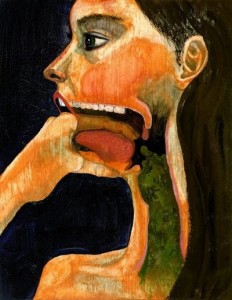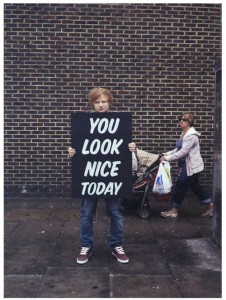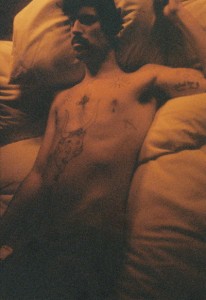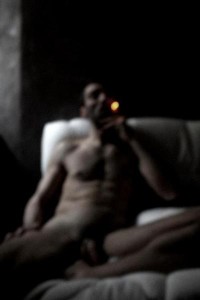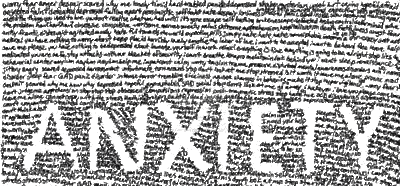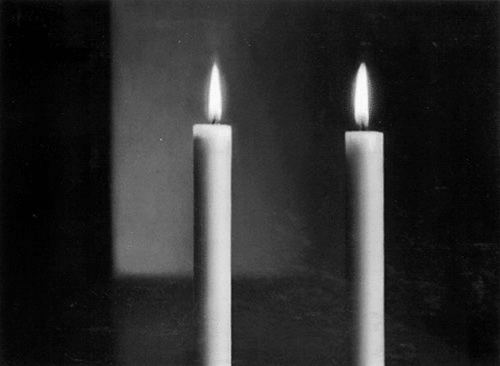This is a series of writings by the relentlessly intelligent Petr Kubica for the Jihlava International Documentary Film Festival, including the year of my retrospective in 2003.
Song for Mixed Choir (1980)
This early movie surrenders to the magic of light and shapes, it’s a flight through a net of nerve fibers that create the brain’s visual sensitivity. Fast changing shapes, spirals of patterns that look exactly like the ones we can see when we close our eyes because of bright light. For most of us, they represent an unimportant part of our vision, but for a debutant avant-garde filmmaker they are the source of what Brakhage calls “closed-eye vision.” For a filmmaker, a song is a testimony to his own prehistory, to the very beginning when he rejected words because he wanted to show the picture, get to its essence and discover its real roots.
This early movie surrenders to the magic of light and shapes, it’s a flight through a net of nerve fibers that create the brain’s visual sensitivity. Fast changing shapes, spirals of patterns that look exactly like the ones we can see when we close our eyes because of bright light. For most of us, they represent an unimportant part of our vision, but for a debutant avant-garde filmmaker they are the source of what Brakhage calls “closed-eye vision.” For a filmmaker, a song is a testimony to his own prehistory, to the very beginning when he rejected words because he wanted to show the picture, get to its essence and discover its real roots.
Two (1990)
Movie about how domesticated cinema participates in the most important situations of human life. When the whole story is told by means of pictures, the movie becomes not only the way to express personal opinions, but also an example of human relationships. Intimate picture as a means of familiarity becomes immediately a medium of confidence.
Modern Times (1991)
Four minute long movie whose title is a paraphrase of Chaplin’s famous film, describes the history of body as a moving object. Movie’s abrupt cuts remind of comical Chaplin as a worker caught by a machine and it all ends in abstract light patterns. Are these lines still Chaplin? And the darkness – is it him, too?
Indusium (1992)
Indusium is a membraneous sprout covering groups of sporangia at certain ferns. For Hoolboom it is also the innermost cover of the fetus, the veil of the sign of inception. This short picture leads us to three places: to a performance of fireworks in Vancouver, to a steelmaking plant in Regina, and to a church in New York. If the church (religious faith) and the plant (technology of social ideas) lie in their tidings deep in the past, then the simple patches of light of the fire offer a quite different hope.
Careful Breaking (1992)
With its colourful images and music’s fast tempo of destruction this movie calls the end of the age of innocence and opens intimate examination of the director himself. First try to evoke physical memories of one’s own body.
House of Pain (1995)
Through the House of Pain the Canadian director discovered his 120 days of Sodom. After three years Hoolboom returned to his already finished film in order to think about it once more and redo it (there was too much pain in the house of pain). In the new version, the picture, which is framed by psycho-horror in genre and by critics’ comparisons with the artistic hits of Genet and Pasolini, consists of four parts which are both a praise and a revolt, a synthetically paralyzing survey of all the nooks of the house of pain in which we are staying, an avant-garde anatomy of the human body. The twirls of abomination and bliss require a very tolerant viewer, the hypnotical film without words goes to the very border of what is acceptable, it is another of the films in which ethics are covered by the skin of the sensuous, instinctive, and mortal body, this vessel of excrements, urine, seat and semen. Homosexuality, sado-masochistic sexual practices, the fourth and final part of the film ‘shiteater,’ which definitively breaks the protected zone of what is considered socially unjustifiable. As if the director with the time-bomb of the lethal virus in the body (the code of our death) wanted to show (the film stands mute, it only shows) all the dark and dirty things with which his body struggles, the weight of these glands. All this would not be enough if Hoolboom’s black and white world was not being uplifted by the strange tenderness which balances out the director’s fetishist obsession to give the film something that had never appertained to it—a film is hardly ever intended to be the last movement. The long rogation of sin pushes the viewer into the defensive, s/he wants to run away from the cinema, for we simply do not want to see certain things; we know about them but being silent about them allows us to survive (or they do not concern us, we are not on the reverse side of the mirror yet). Even for this reason we consider it important to draw the viewer’s attention to the extreme nature of the featured picture.
*
In the fetishist relationship we are inside ourselves, we become a thing which represents a thing, led into the intimacy of an unloving thing and all the time during full consciousness, we succumb to the ecstasy of how the thing—us—is being dealt with. We experience inside and simultaneously we look at ourselves from the outside, we give ourselves to be seen absolutely and at the same time we are perfectly hidden. Uncertainty: to what else can the picture get even closer so that our eyes could bear it, what can represent and own, which parts of the body can vision take out from us and present them in order for us to be able to survive ourselves? Maybe the borderline of what is bearable is defined by the will for life, if it collapses, the safety of the constant forms and the divisible space of the body and soul is lost, the soul becomes the phantom of the thing of the body, its helpless fetish, which succumbs to its violence and wants only to free itself from its ability to perish, sometimes through a prayer, other times through excrements. Both are an appeal to the finality to a metamorphosis within it.
Panic Bodies (1998)
Having been diagnosed HIV positive, Hoolboom received a new impulse. The presence of the virus and its hiddenness evoke a chain of allusions and biological visions, new exercises in his film memory. The obsessive presence of sex/injury perseveres. However, it is no longer a shock of explicit nudity. Sexuality is an elegiac demonstration of incompatible, random beings. In the director’s vision, the film undergoes the same kind of transformation (decay: film, a body without organs), but the loop of eternal return provides the film with a true resurrection.
The film is divided into six parts. The opening part (Positiv) is the director’s collage of porn, popular science films, detailed footage of cells as well as sequences from classical films of big narratives. The picture is divided into four – one of them features the director and his soliloquy about AIDS that comments on bodies entangled in sex and death. The film’s second part (A Boy’s Life) is a bizarre kaleidoscope about masturbation and the loss of the penis, an ironic reminder of men’s giant fear. In the third part (Eternity), a letter of Tom Chomont overlaps footage from a family archive. The words are suddenly more important than the picture. It is a long passionate confession about dying and about light, which does not hurt the eyes. Even the individual letters are too white.
In an experimental “fiendish” romance (1+1+1), manual work with the film material is dominant along with scratches, spilled paint and an industrial soundtrack. The work of Moucle Blackout, an Austrian filmmaker born in Prague, became an inspiration for an impressionistic idyll in the film’s next part (Moucle’s Island). Several decades old footage shows naked women at play. Archetypal nudist sweetness that evokes a remote innocence is an intermezzo, which precedes the final part (Passing On). The director’s suggestive confession is fully focused on death: fatigue is endless, the betrayal of the body (conspiracy of chromosomes) is irrevocable. There’s nothing left to do but compose a sad song in a long loop of solitary walk.
Tom (2002)
Tom is an ethereal stream of bright images, a brooding nightmare about a life of obsession, an emotional profile of the director’s friend Tom Chomont – a photographer, filmmaker, video artist and a prominent figure of the New York underground culture. Once again, the body – encoded into the fragments of fim images, a biography of the body analyzed from the inside out – is the centerpiece of the film: Chomont’s naked skinny body, showing the symptoms of AIDS and trembling at the onset of the Parkinson’s disease.
The biography is a map of images that are connected with it and illustrate it without necessarily being original. The biography thus becomes an imaginary passage through the history of film signs, the water of images, which imitate our memory to show that only such images can make it accurate and true. In a labyrinth of the city, we follow the life of a man, who talks openly about his weird childhood, a romance with a crook, incest with his own brother, sadomasochism, fetishist romances, and about the light that opens and ends the film (life). The film hypnotically connects the original work of Chomont (experiments with a homosexual touch made in the early 1960s), selection from the mainstream of American cinematography (west coast), tempered images of the city (a reflection of NYC in time), Tom’s present situation (long shaving, dressing in women’s clothes) and his original commentary.
The sequences are cut out of context; Chomont’s body becomes the fetish of Hoolboom’s installation, a skin for a fascinating style of a river of irrelevant, yet perfectly interconnected images. The film is a pledge of faithfulness of one filmmaker to another, a heritage of odd sensitivity, an ornament of the fringe that will never become the centre. It is a film made by people who are falling apart and use a lyric trick to remind us of the progress of death that otherwise seems so sudden and static.
Imitations of Life (2003)
Even in his newest film Mike Hoolboom works with the history of film, with material that is not untangled from interpretations. Excerpts from films do not exist on their own; they are presented in layers with respect to evolutional continuity. The syntactic theme of the film is the awareness of the competing images (layering as disappearing).
A major Hollywood feature film and its great story marks the beginning of this work, and this gives way to family footage, documents and scientific films as important margins. That’s what makes Hoolboom’s film an original commentary on the situation of the history of film (arguments), there is a profound iconoclasm in the approach towards the history of film, an attempt to resuscitate these dying images. The poetic is merged with politics. The political is an index of forgotten, but non-disappearing images from the films of empires-that eternal colonial weapon, images imported by ideology. The poetic is represented by emotions and moods. It is mainly the art of editing that becomes the soul of the imaginative gap between light and darkness.
Critics point out that Hoolboom’s film is in a field somewhere between the brave poetics of Derek Jarman and the political bravery of Pier Paolo Pasolini. His film essay has one more foundation: psychoanalysis. Childhood experiences, unaffected first impressions, comment on Freud’s (and Lacan’s) thoughts on the way people transform their own childhood memories, how they distort them by their aging memory, but still they remain authentic. At the same time, Hoolboom tell us as the narrator that the moving image has disrupted the awareness of death. It as if it accepted the role of death. If death was a protest against life and against the dream of eternity, then the film, by capturing the disappearing images, by fixating all that had to die first, makes death eternal. Film not as a preservation of life, but film as eternal death. We have to learn to die once more, to free ourselves from our own image. Both colour and black and white film is used; the grainy 8-millimter film destructs the studio pretence, subtitles and the ironic soundtrack reflect the possibilities of the film essay. Imitations of Life consists of ten chapters, each of which has an individual intonation and cinematographic style. The chapters: In the Future, Jack, Last Thoughts, Portrait, Secret, In My Car, The Game, Scaling, Imitation of Life, and Rain.
Public Lighting (2004)
How can we capture the flow of life? New picture of a Canadian filmmaker offers a study of six different types of personalities. Variety of life substances introduced in these miniatures run in the whole of the film into universal conceptions of the light being. Seven chapters prove that the inner world of film is always ahead of us, foreruns us, showing us our dark horizon. Each part lives its own life, sometimes empowers us and wants to speak on behalf of us. Another voice of film mediation replaces man. Its secrets lay in the method in which the film embodies itself in people and speaks their language. This hypnotic film admits the existence of an outer life only on the basis of its own reality, the cohesiveness of body and shape will never return. The collective subconscious of a cinematograph on all its levels, including archive pictures and home videos, is the source of sublimation. Libido is its substance.
Fascination (2006)
“What is my name? I thought everybody knew it. My name is Art Star.” Gay man who died in 2001, Colin Campbell was the pioneer of video art, colleague, lover and advisor to many of his followers. A mix of interviews, Colin’s works, archival material and author images multiplies his portrait and represents a chronicle of the period in which Campbell worked and which roughly corresponds to the Cold War years. As if the atomic bomb era was the perfect prerequisite for visual music of experimental cinema.
Lacan Palestine (2011)
Fantastical images and semantic collages reveal film as a vital medium of memory. Biblical texts and the metaphor of symbols, Hollywood narratives and literal imagination, a wall of segregation. Like cinematic images emerging from the desert of the consciousness to stimulate our imagination, so too is Palestine searching for its borders and its autonomy. Hoolboom shows Palestine as the setting of a love story without love – with Moses, Abraham, and Jacques Lacan in the main roles.

